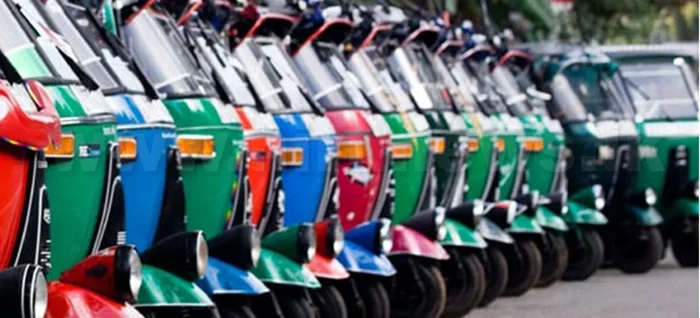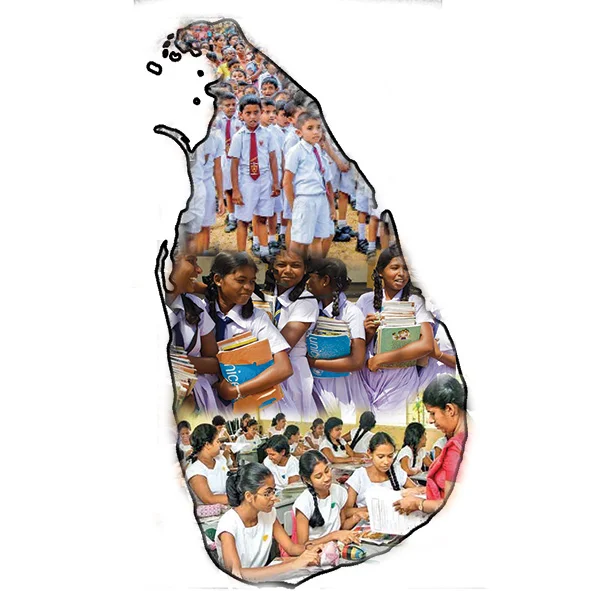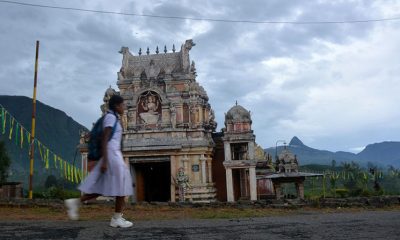Opinion
Is Sri Lanka’s war on three-wheelers an attack on the poor?

For decades, three-wheelers—commonly known as tuk-tuks—have been a vital part of Sri Lanka’s transportation system. They provide an affordable and convenient way for people to get around, especially in areas where public transport is unreliable. However, successive governments have repeatedly discouraged their use without offering a viable alternative. While concerns about traffic congestion, safety, and regulations are valid, cracking down on three-wheelers without a proper replacement is unfair to both commuters and drivers.
For millions of Sri Lankans, three-wheelers are not just a convenience but a necessity. They serve as the primary mode of transport for those who cannot afford a private vehicle and as the only reliable last-mile option when buses and trains are not accessible. Senior citizens, people with disabilities, and those carrying groceries or luggage rely on tuk-tuks for their ease and accessibility. Unlike buses, which often require long walks to and from stops, three-wheelers offer door-to-door service, making them indispensable for those with mobility challenges.
In rural areas, where public transport is scarce, three-wheelers are even more critical. Many villages lack frequent bus services, and trains do not serve short-distance travel needs. Tuk-tuks fill this gap, ensuring people can reach markets, hospitals, and workplaces without difficulty. In urban areas, they provide a quick and affordable alternative to taxis and private vehicles, especially for short trips.
Despite their importance, three-wheelers have increasingly come under government scrutiny. Restrictions on new registrations, negative rhetoric about their role in traffic congestion, and limits on their operation in cities suggest that policymakers view them as a problem rather than a necessity. Authorities often cite traffic congestion, safety concerns, and lack of regulation as reasons for discouraging tuk-tuks. While these issues are valid, banning or restricting them without addressing the underlying transport challenges is not the solution.
The biggest flaw in the government’s approach is the absence of a proper alternative. Sri Lanka’s public transport system remains unreliable, overcrowded, and often inaccessible for many. Buses and trains do not provide efficient coverage across all areas, and ride-hailing services like Uber and PickMe, while convenient, are often too expensive for daily use. Without a suitable replacement, discouraging three-wheelers only makes commuting more difficult for those who rely on them the most.
Beyond the inconvenience to passengers, the economic impact of limiting three-wheelers is significant. Thousands of drivers depend on tuk-tuks for their livelihoods, and with rising fuel prices and economic instability, they are already struggling to make ends meet. Further restrictions will push many into financial hardship, increasing unemployment and poverty. For passengers, particularly those from lower-income backgrounds, losing three-wheelers as an option means higher transport costs and fewer choices.
Instead of discouraging tuk-tuks, the government should focus on improving and regulating them. Many countries have successfully integrated three-wheelers into their transport systems through proper policies. Sri Lanka could do the same by enforcing proper licensing and training for drivers, introducing digital fare meters to prevent disputes, ensuring better vehicle maintenance for safety, and designating tuk-tuk lanes in high-traffic areas to reduce congestion. These measures would make three-wheelers safer and more efficient rather than eliminating them without a backup plan.
The government’s push to restrict three-wheelers without providing a suitable alternative is both unfair and impractical. Tuk-tuks remain the only viable transport option for many Sri Lankans, particularly senior citizens, low-income commuters, and those in rural areas. Instead of treating them as a nuisance, authorities should recognise their importance and focus on making them safer and more efficient. Until a proper substitute is in place, discouraging three-wheelers will only create more problems for the very people who need them the most.
P. Uyangoda
Director-Education (retired)
Nedimala
Opinion
Learning from global models to address flooding and water shortage in Sri Lanka

by Sudharman Siripala
Sri Lanka is grappling with the increasing threat of climate change, which has led to unpredictable weather patterns. The country faces a dangerous combination of flooding in some regions and water shortages in others, a situation exacerbated by shifting rainfall patterns. Rivers originating in the Central Hills, such as the Mahaweli, Kalu, and Kelani, flow through much of the country, but these water sources are not being distributed evenly. Districts like Monaragala and Hambantota, located in the dry zone, are experiencing severe water shortages. To address this challenge, experts suggest the development of an interconnected river system to harness excess water during floods and redirect it to drier areas, ensuring a year-round water supply for agriculture and daily use.
Global Case Studies in River Management
Several countries facing similar water-related challenges have implemented successful water management systems that Sri Lanka could adapt to its unique circumstances:
The Netherlands – Room for the River Programme
The Netherlands, a country prone to flooding, widened its rivers and relocated dikes to create floodplains. This approach allows rivers to overflow without damaging urban areas, while preserving water flow and natural habitats. Sri Lanka could apply this concept by designating specific riverbank areas for temporary flood storage.
China – South-North Water Transfer Project
China’s massive project channels excess water from the flood-prone Yangtze River to drier northern regions. This system of canals and reservoirs could inspire Sri Lanka to divert water from rivers in the Central Hills to drier areas in the south and east.
Bangladesh – River Interlinking Projects
Bangladesh has implemented river interlinking projects to redistribute water from flood-prone rivers, such as the Brahmaputra, to drier regions. Sri Lanka could link its major rivers like the Mahaweli and Kelani to smaller rivers in water-scarce districts to balance water distribution.
India – National River Linking Project
India’s National River Linking Project connects major rivers to manage both floods and droughts. Sri Lanka could use similar strategies, connecting rivers around the 500-foot contour line in the Central Hills to help distribute water more effectively.
United States – Mississippi River and Tributaries Project
The Mississippi River system combines levees, floodways, and diversion channels to manage flooding. Sri Lanka could adopt similar flood-control measures in vulnerable river basins such as the Kelani and Kalu.
Japan – Underground Reservoirs and Flood Channels
Japan’s G-Cans Project in Tokyo channels excess water into underground reservoirs to prevent urban flooding. A similar underground system could be implemented in Colombo and other flood-prone cities in Sri Lanka.
Singapore – Marina Barrage
Singapore’s Marina Barrage serves as both a flood control measure and a water supply resource. Sri Lanka could develop similar systems to control flooding in urban areas and ensure water availability during dry spells.
Thailand – Chao Phraya River Basin Management
Thailand uses diversion channels in the Chao Phraya River Basin to prevent flooding in Bangkok and direct water to agricultural areas. Sri Lanka could replicate this by creating diversion channels to supply water to its agricultural zones.
Actionable Solutions for Sri Lanka
Develop an Interconnected River System
Establish water diversion channels along the 300-500 meter contour lines of the Central Hills to capture excess rainfall during floods and redirect it to drier areas.
Build Reservoirs and Storage Tanks
Construct reservoirs to store diverted water, ensuring a steady supply for agriculture and domestic use. Sri Lanka has around 14,000 ancient tanks out of 30,000 that could be revitalized for this purpose.
Improve Urban Flood Defenses
Drawing inspiration from Japan and Singapore, build underground reservoirs and flood channels in cities like Colombo to mitigate urban flooding.
Strengthen Watershed Management
Restore natural floodplains and create wetlands to absorb excess rainwater, as seen in the Netherlands, helping to reduce flood risks.
Encourage Public-Private Partnerships
Foster collaboration between the public and private sectors to fund large-scale water management infrastructure, leveraging models from China and the United States.
Leverage Technology
Utilise modern forecasting and real-time water management systems, similar to those in Bangladesh and Thailand, to monitor water levels and manage river flows dynamically.
International Collaboration
Form partnerships with countries that have successfully implemented flood control and water management systems to share expertise and technology.
Sri Lanka’s dual challenges of flooding and water scarcity, compounded by climate change, require immediate action. By developing an interconnected river system and learning from successful global water management models, Sri Lanka can mitigate the effects of floods while ensuring a sustainable water supply for agriculture and daily life. It is crucial for the country to act now, as these solutions have the potential to transform Sri Lanka’s water management system for the better.
Sudharman Siripala Managing Director of Geoinformatics Group and a Registered Licensed Surveyor, specializes in geo-spatial applications. He also serves as a freelance value chain consultant for Vivonta Green Tech Consultants (www.vivonta.lk)
Opinion
Doctor’s plight

Some people have found fault with a female doctor for not coming forward to identify her rapist and help make him pay for his crime.
Do they not realise the emotional toll of facing her rapist again?
There should be a way for survivors to testify directly to the judge without enduring such distressing encounters. Making a victim relive her trauma in this manner is akin to subjecting her to the ordeal all over again.
A Ratnayake
Opinion
Developing attitudes of schoolchildren for development

Sri Lanka was once at an economically comparable level with some of the world’s most developed countries in the 19th century. However, despite our country’s potential, we are still striving to fully develop. Many people often blame politicians, government officers, or various sectors for the situation. However, I believe the root cause of these issues lies not in any individual or group, but in the lack of good attitudes within our society.
We are investing significant resources into our education system, which is funded by the taxes of hard- working citizens. However, when we examine the outcomes, we realise that the academic achievements of our graduates alone are not enough. There are instances where professionals, despite having the necessary qualifications, fail to uphold ethical standards. In some cases, this even results in malpractice or harmful actions that damage our country’s reputation and progress. This highlights the gap between academic success and real-world responsibilities.
The education system, which is currently focused on competitive exams and rote learning, does not emphasise the development of attitudes and character in students. While our students are academically capable, many lack the qualities required to contribute positively to society. This lack of focus on social values, such as patriotism, selflessness and respect for elders, is holding us back from achieving the level of progress we deserve.
To address these concerns, I wrote to His Excellency, the President of Sri Lanka, on 24th September 2024, proposing education reforms that emphasise not only academic qualifications but also attitudes, ethics, and social responsibility. I suggested a holistic approach to university admissions and government recruitment, incorporating moral integrity, character, and extracurricular involvement, key traits for fostering well- rounded, responsible citizens. More importantly, I strongly recommended introducing a compulsory school subject, with both theory and practical components, focused on attitude development, which would be evaluated in university admissions. Encouraging extracurricular participation alongside academics will help shape ethical and socially responsible individuals.
I am pleased to inform you that the President, recognising the importance of these reforms, has directed the relevant ministries (by a letter dated 24th October 2024) to explore integrating these ideas into the education system. This marks a crucial step in transforming the values and attitudes of our youth for the nation’s benefit.
However, meaningful change requires collective effort. Parents, teachers, students, and citizens all play a role in shaping Sri Lanka’s future. Together, we must instill responsibility, ethics, and patriotism in the next generation. I invite you to share your thoughts and suggestions on further enhancing the values and attitudes of our youth. Your feedback will be invaluable in building a brighter future for Sri Lanka, one driven not just by knowledge, but by integrity and character.
Dr. Mahesh Premarathna
Research Fellow, National Institute of Fundamental Studies, Sri Lanka Email: mahesh.pr@nifs.ac.lk
-

 News7 days ago
News7 days agoSeniors welcome three percent increase in deposit rates
-

 Features7 days ago
Features7 days agoThe US, Israel, Palestine, and Mahmoud Khalil
-

 News7 days ago
News7 days agoScholarships for children of estate workers now open
-

 Foreign News5 days ago
Foreign News5 days agoBuddhism’s holiest site erupts in protests over Hindu ‘control’ of shrine
-

 News7 days ago
News7 days agoJapanese Defence Delegation visits Pathfinder
-

 Features4 days ago
Features4 days agoCelebrating 25 Years of Excellence: The Silver Jubilee of SLIIT – PART I
-

 Editorial6 days ago
Editorial6 days agoWhen tractors become cars!
-

 Business2 days ago
Business2 days agoAIA Higher Education Scholarships Programme celebrating 30-year journey











